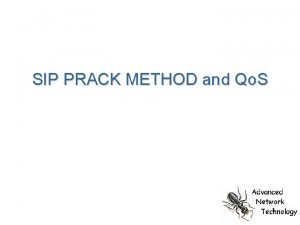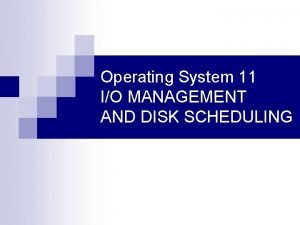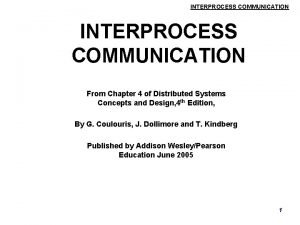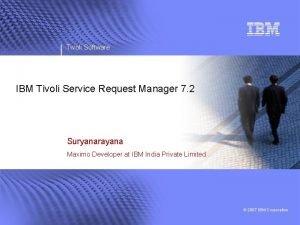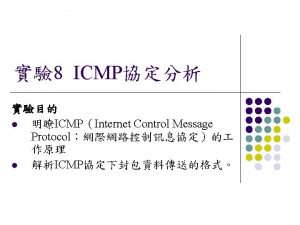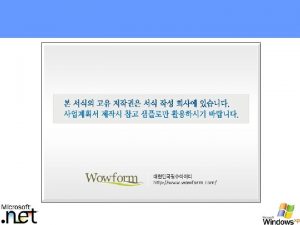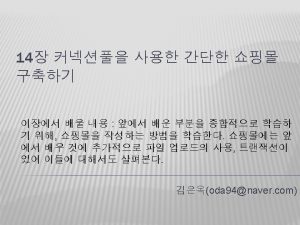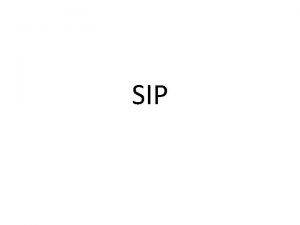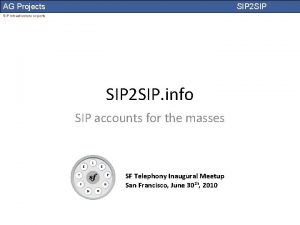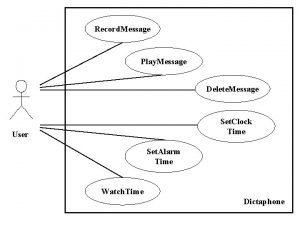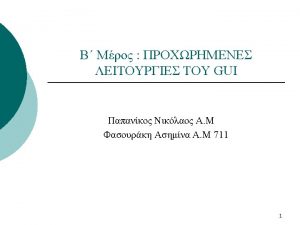SIP Forking 107214005 20201201 1 SIP Message Request











- Slides: 11

SIP Forking 107214005 田蕙瑜 2020/12/01 1

SIP Message — Request or Response • Request: REGISTER, INVITE, ACK, BYE, CANCEL, MESSAGE etc. • Response(Status code): 1 xx: Provisional; 2 xx: Success; 3 xx: Redirection 4 xx: Client Error; 5 xx: Server Error; 6 xx: Global Failure Source Destination Info. [註] Client IP: 10. 21. 22. 197; SIP Server IP: 163. 22. 20. 111 2

Transaction Def. a SIP transaction consists of a single request and any responses to that request Type: • INVITE Transaction: It consists of a three-way handshake. • Non-INVITE Transaction: It do not make use of ACK. 3

CSeq(Command Sequence) Def. The CSeq header field serves as a way to identify and order transactions. It consists of a sequence number and a method. 4

SIP Message — Request-Line: MESSAGE sip: chris@163. 22. 20. 111 SIP/2. 0 Message Header: • Via: SIP/2. 0/UDP 10. 72. 21. 52: 5060; branch=z 9 h. G 4 b. K. Agn. Km 6 ux 8; rport • From: <sip: alice@163. 22. 20. 111>; tag=f. P 3~v. Ww. X~ • To: sip: bob@163. 22. 20. 111 • CSeq: 20 MESSAGE • Content-Type: text/plain • Content-Length: 2 • User-Agent: Linphone Desktop/4. 2. 2 (Windows 10 Version 2004, Qt 5. 14. 2) Linphone. Core/4. 4. 0 -13 -gc 99 cb 9 c 88 Message Body: • Line-based text data: text/plain (1 lines) • hi 5

SIP Message — Response Status-Line: SIP/2. 0 200 Ok Message Header: • Via: SIP/2. 0/UDP 10. 72. 21. 52: 5060; received=10. 72. 21. 52; branch=z 9 h. G 4 b. K. Agn. K m 6 ux 8; rport=5060 • From: <sip: alice@163. 22. 20. 111>; tag=f. P 3~v. Ww. X~ • To: <sip: bob@163. 22. 20. 111>; tag=A 8 slv. Po • Call-ID: ZEk. Bue-zn. E • CSeq: 20 MESSAGE • Sequence Number: 20 • Method: MESSAGE 6

A SIP Call: Chris called Bob, Bob answered and hung up Chris 10. 21. 22. 197 SIP Server 163. 22. 20. 111 Bob 10. 21. 24. 21 INVITE 100 Trying 180 Ringing 200 OK ACK BYE 200 OK 7

DEMO 1 – A SIP Call Wireshark setting: Capture filter: udp port 5060 Display filter: sip Listen on the Ethernet Scenario (Wireshark run on Chris): Chris IP: 10. 21. 22. 197 SIP Server IP: 163. 22. 20. 111 8

SIP Forking • Alice call Bob, but there are 2 Bobs… => INVITE will be forked. SIP Server 163. 22. 20. 111 Bob(Win 10) Alice 10. 21. 22. 197 10. 21. 24. 17 INVITE 100 Trying 180 Ringing 200 OK ACK Bob(Mac) 10. 21. 24. 21 INVITE 180 Ringing 200 OK ACK CANCEL 200 OK 487 Request terminated ACK 9

SIP Forking SIP Server 163. 22. 20. 111 Bob(Win 10) Alice 10. 21. 22. 197 10. 21. 24. 17 • CANCEL sip: bob@10. 21. 22. 197; transport=udp SIP/2. 0 • Via: SIP/2. 0/UDP 163. 22. 20. 111; branch=z 9 h. G 4 b. Kfb 7 a. 65535 e 1962 a 113109 ef 75150 be 3 a 9 b 4 c. 1 • From: <sip: alice@163. 22. 20. 111>; tag=-l. Jp 4 Ghc~ • To: sip: bob@163. 22. 20. 111 • CSeq: 20 CANCEL • Call-ID: wz~TVHXav 5 • Max-Forwards: 69 • Content-Length: 0 • Reason: SIP; cause=200; text="Call completed elsewhere" INVITE 100 Trying 180 Ringing 200 OK ACK Bob(Mac) 10. 21. 24. 21 INVITE 180 Ringing 200 OK ACK CANCEL 200 OK 487 Request terminated ACK 10

DEMO 2 – SIP Forking Wireshark setting: Capture filter: udp port 5060 Display filter: sip Listen on the Ethernet Scenario (Wireshark run on Bob’s PC): Alice call 2 Bob call 2 Alice 11
 Sip forking
Sip forking Sergeant at law canterbury tales
Sergeant at law canterbury tales Sip prack message example
Sip prack message example Request pekerjaan konstruksi
Request pekerjaan konstruksi Betadesk betadesk - in beta, pt. 2
Betadesk betadesk - in beta, pt. 2 Did i request thee maker from my clay
Did i request thee maker from my clay When the process issues an io request
When the process issues an io request External data representation and marshalling
External data representation and marshalling Service request manager
Service request manager Echo request
Echo request Vb.net post request
Vb.net post request Slidetodoc
Slidetodoc


